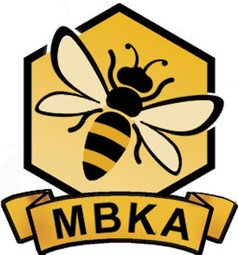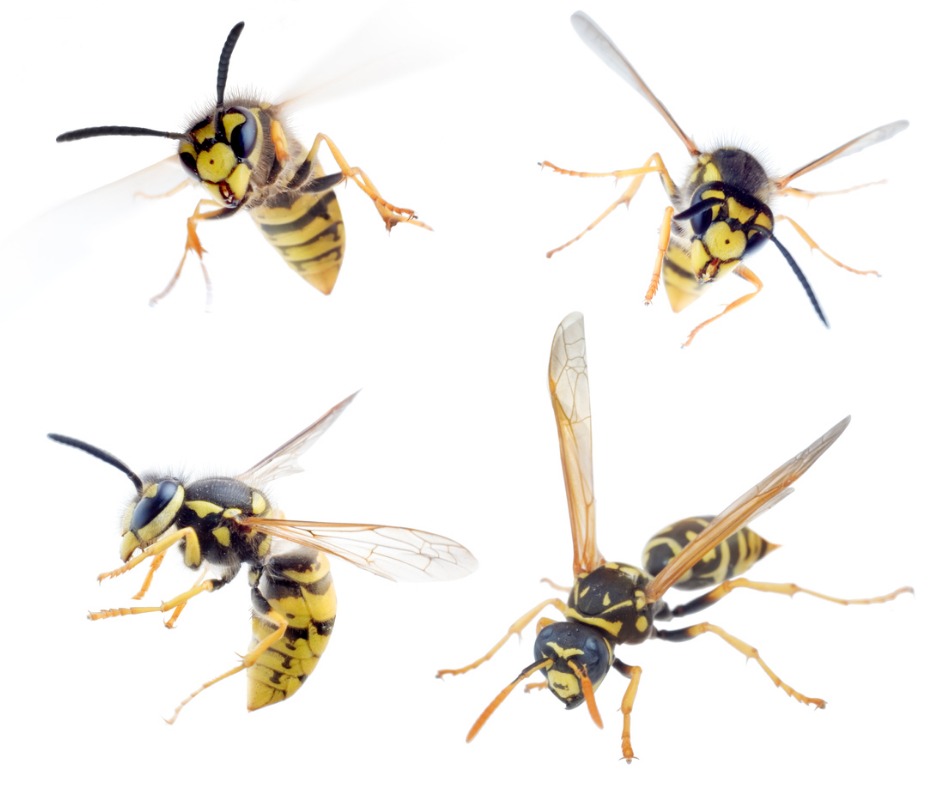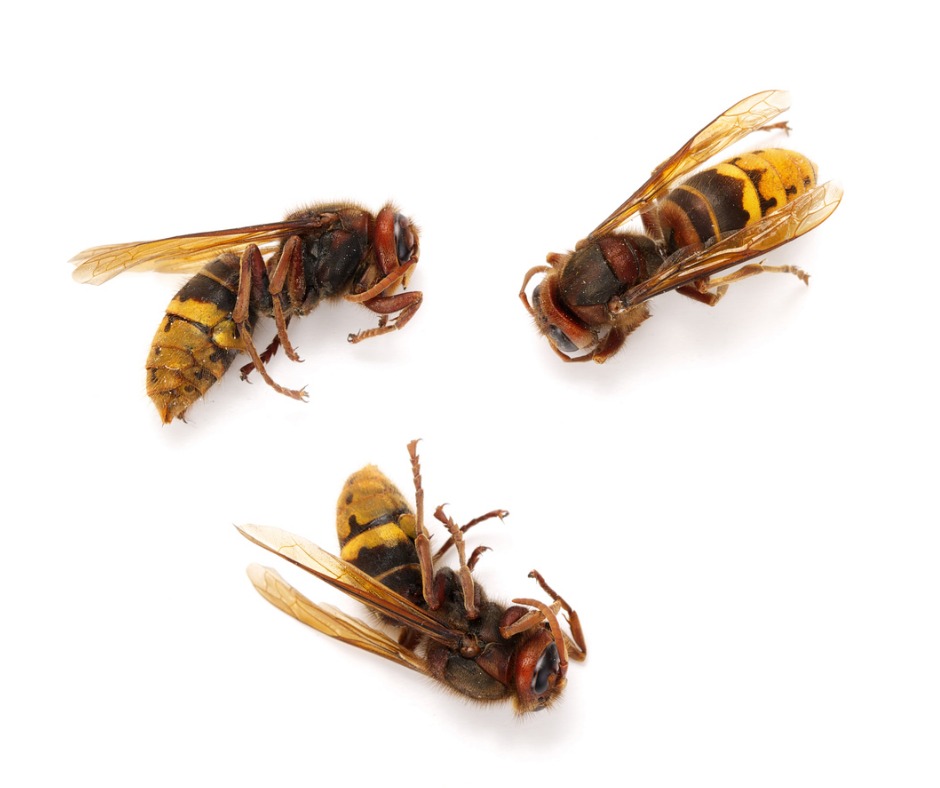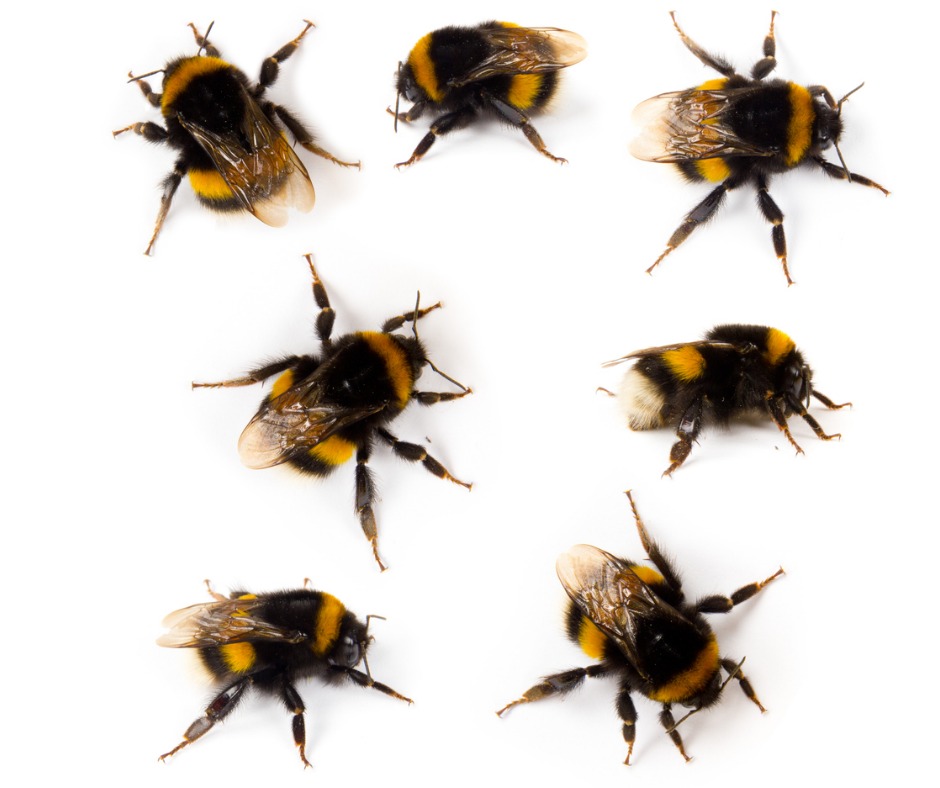Swarms
What do I do if I see a swarm? Firstly, don't panic!
Although it may seem a bit frightening, swarming honey bees are not dangerous, will not chase you, and are extremely unlikely to sting anyone. Enjoy watching them - a swarm of bees is one of nature's wonders!
What is a swarm?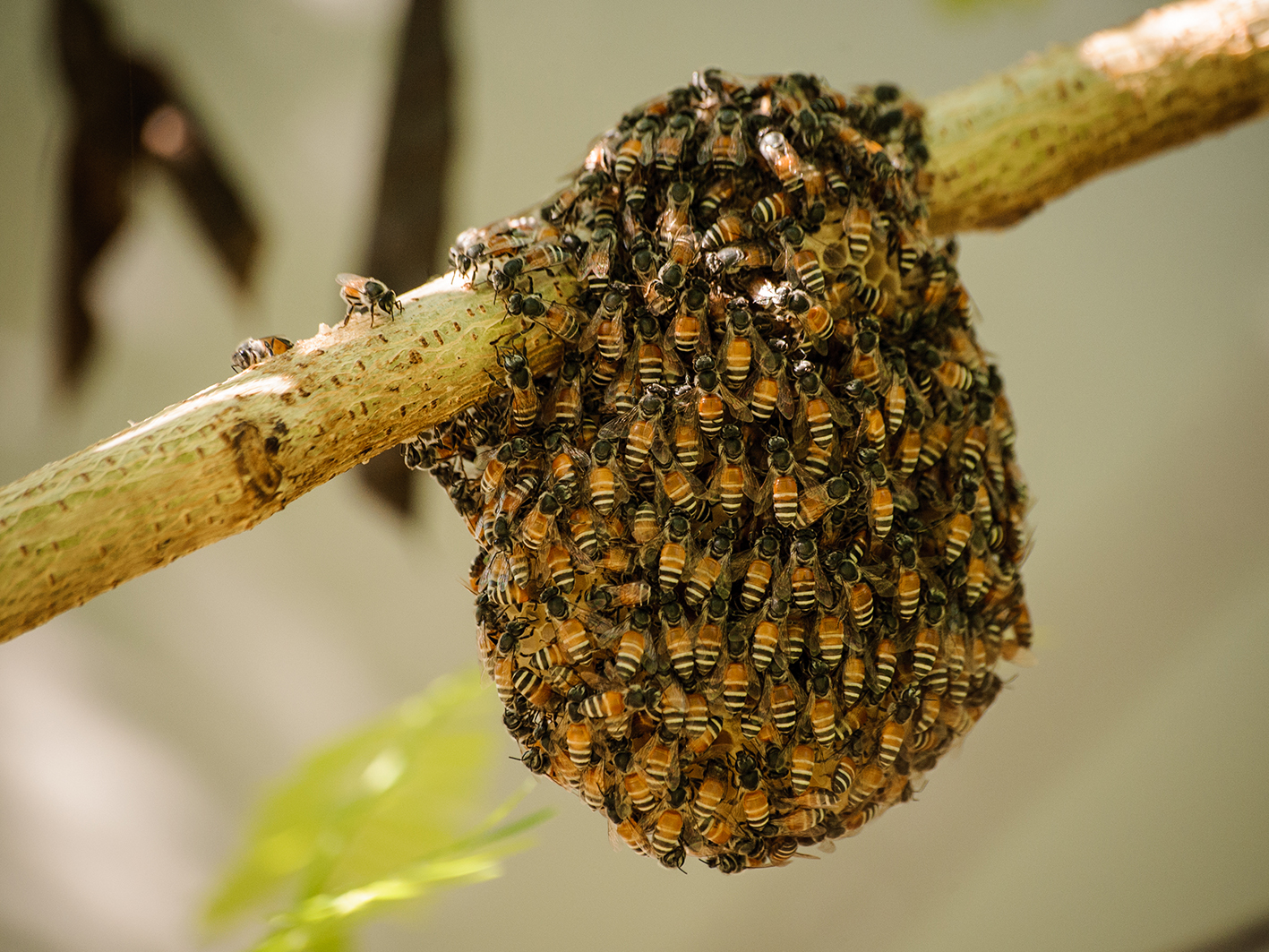 When honey bees swarm they are simply moving house. They will leave their old home in a huge swirling, buzzing cloud of bees and will soon settle onto a tree or other object where they will hang in a 'cluster'. The cluster can range in size from something as small as a tennis ball to something as big as a pillow, depending on how many bees there are. At this stage scout bees will begin searching for a new home - perhaps in a hollow tree, a shed, a postbox,, or a roof. When a suitable new home has been found, usually after a few hours, the swarm will fly off and move in.
When honey bees swarm they are simply moving house. They will leave their old home in a huge swirling, buzzing cloud of bees and will soon settle onto a tree or other object where they will hang in a 'cluster'. The cluster can range in size from something as small as a tennis ball to something as big as a pillow, depending on how many bees there are. At this stage scout bees will begin searching for a new home - perhaps in a hollow tree, a shed, a postbox,, or a roof. When a suitable new home has been found, usually after a few hours, the swarm will fly off and move in.
What can I do about a swarm?
Beekeepers can come and collect a swarm of bees when it is hanging in a cluster, before it moves off again. Melksham Beekeepers Association members offer a free swarm collection service to the general public.
This is a voluntary service and beekeepers will only be able to come if it is convenient and safe for them to do so. If they do come, they cannot guarantee that the swarm will be removed if it is in a particularly difficult or dangerous place. Sometimes branches of bushes and trees may have to be cut in order to gain access to the bees - you will be consulted in advance. To arrange for a beekeeper to come please contact the MBKA Swarm Liaison, details below.
Before you contact the swarm liaison. It would be helpful to consider the following questions, this will help the beekeeper to decide on the course of action. Don't forget to add your telephone number so that they can contact you directly.
To the best of your knowledge, how long have the bees been in their current position? How big is the swarm (tennis ball, rugby ball, etc)?
Are they honey bees? If you aren't sure, make a note of the colour, and behaviour of the bees so that the beekeeper can make their own assessment. The best thing to do is to take a photo on your phone and send it to the beekeeper.
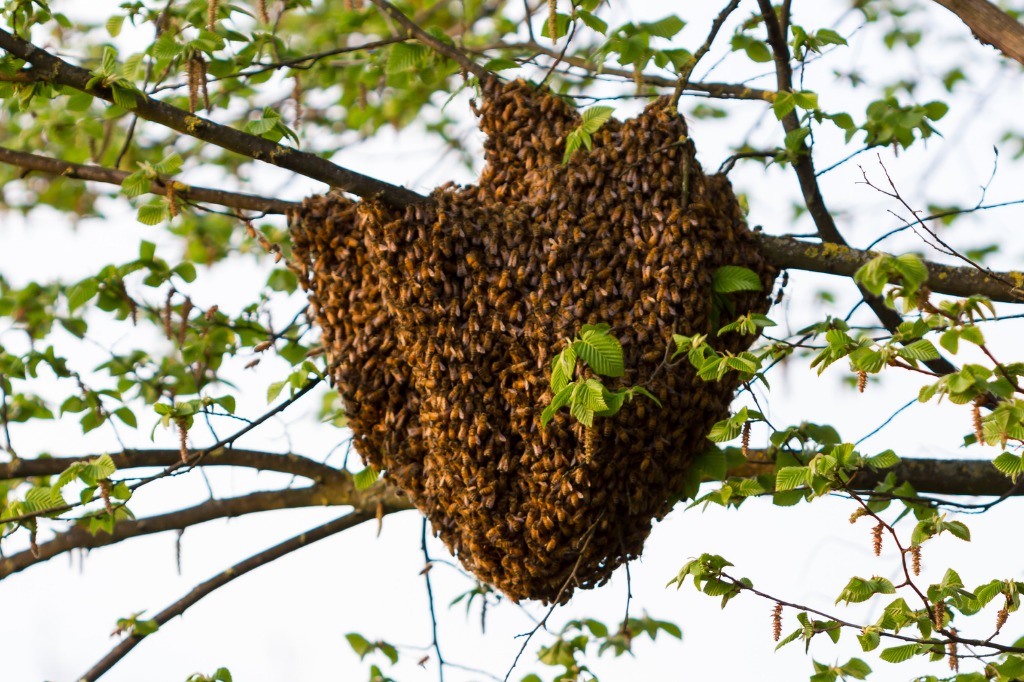
Where is the swarm? Are they accessible? Are they in a tree, in a shed, etc? If in a tree, how far off the ground are they? Will the beekeeper need a ladder? Will the beekeeper need to climb over any fences or walls?
by email MBKA Swarm Liaison
or call Chris on 07841 291449
Bumblebees are harmless and should be left where they are - they will normally move away after a few months. The pictures below might help with identification if you are unsure.
